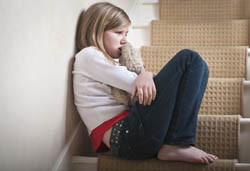A new approach to anxiety in childhood
The ANXIETY IN CHILDHOOD project combined attachment and social learning theories, and their methodologies, to learn more about how childhood anxiety disorders develop. Conducted over 27 months, the project involved a 15-month outgoing phase and a 12-month ingoing phase. Two studies were done to address the interrelation between anxiety disorders, emotion regulation, attachment, cognitions and behaviours. The first involved a high-risk New York longitudinal sample, and the second a Copenhagen sample of clinically anxious children and their parents. Preliminary findings have been presented at international conferences. The findings are related to two areas of inquiry. The first relates to the effect of involving parents in the treatment of their child. The second has to do with the influence of maternal cognitions and attachment relations on their behaviour towards a child unknown to them. Knowledge within the field of childhood anxiety and attachment has been provided to the wider European community. One conference was held on childhood anxiety, and hosted guest speakers from Norway, the United Kingdom the United States. It also included presentations by researchers from many other European countries. During the project, the 'Nordic Attachment Network, conference' was organised in relation to the newly established network on attachment for professionals. Three articles have been accepted for publication in international peer-reviewed journals. Another, on the influence of attachment relations in childhood on the development of anxiety in youth, is currently under review. Furthermore, a new observational assessment to evaluate parent-child interactions has been developed. Initial work on applying the observational method has been carried out, and refinements are being applied. Project work and findings should help in the development of preventative measures and targeted treatments for at-risk youth.
Keywords
Anxiety in childhood, family, attachment, social learning, parent-child interactions




